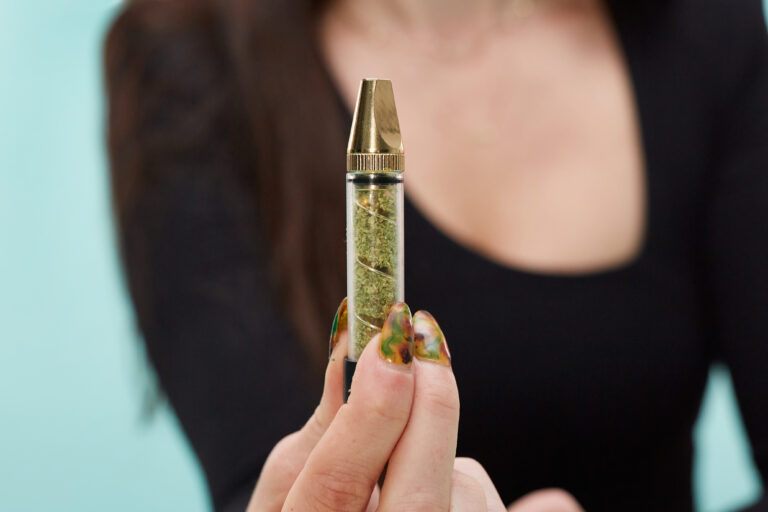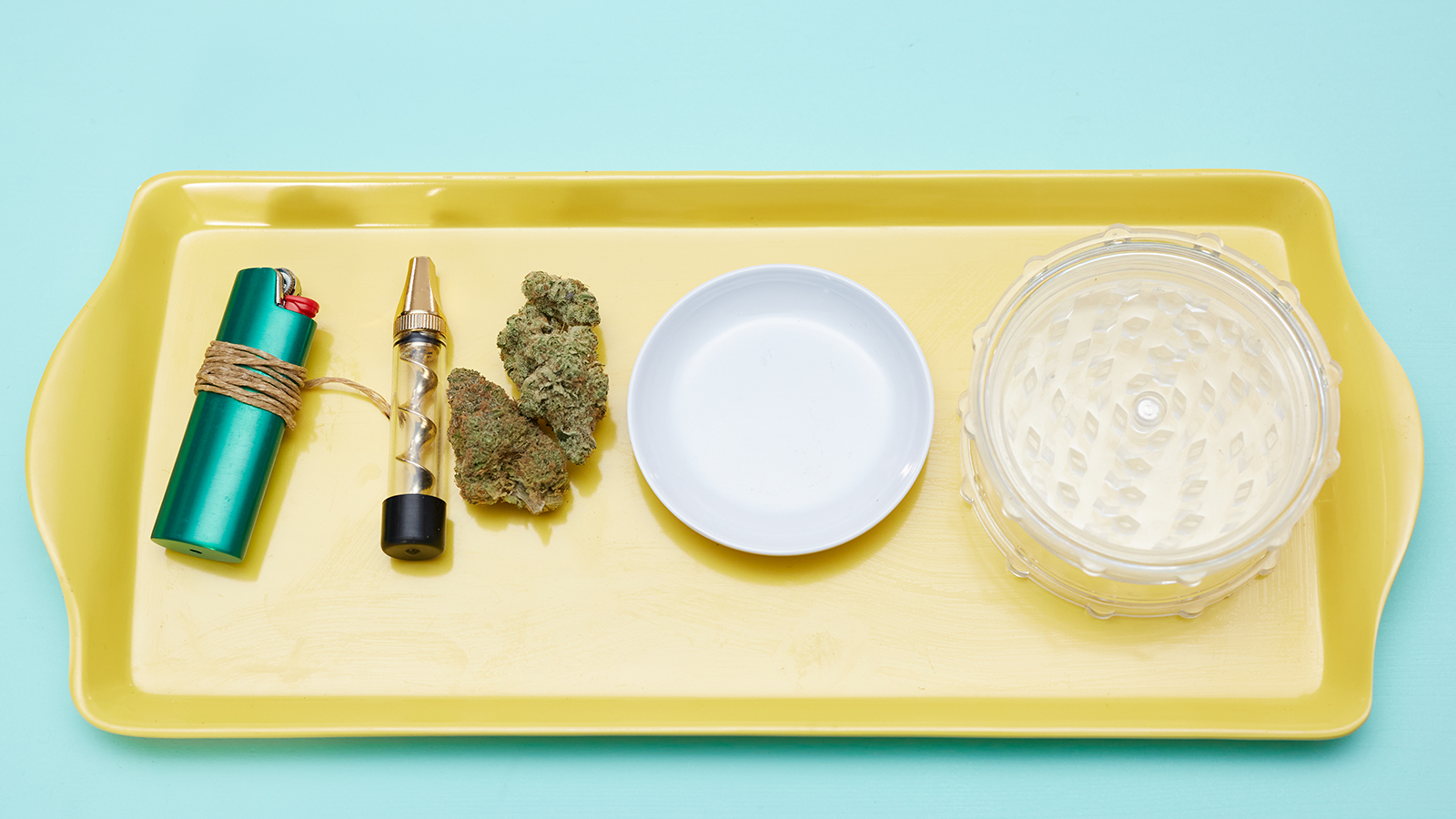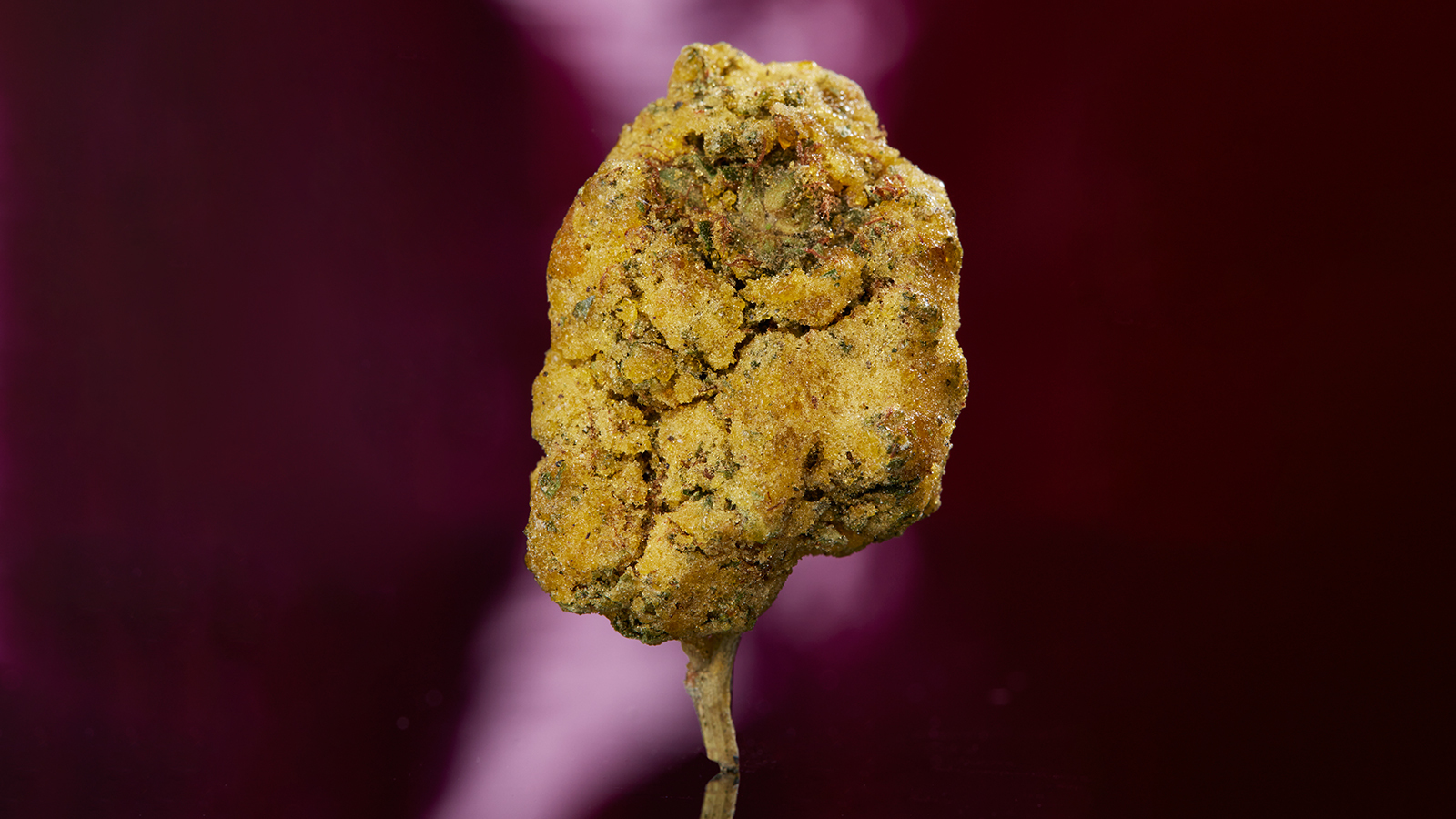As one of the most popular ways to puff, blunts are a cultural staple in the cannabis world and have been enjoyed for decades. To be considered a true blunt, a tobacco leaf wrap must be used as the rolling paper. But tobacco is a known carcinogen, so many people have sought other, less harmful options to roll up.
Today, tobacco-free blunt wraps include hemp, palm leaves, and flower petals, among other materials. But what's guaranteed to provide the tastiest and most convenient blunt smoking experience possible? A glass blunt.
What is a glass blunt?
A glass blunt is a glass tube that can be loaded and smoked — much like a blunt, but without the hassle of rolling or the risk of smoking tobacco.
 Photo by: Gina Coleman/Weedmaps
Photo by: Gina Coleman/WeedmapsImage lightbox

It usually comes in two different styles: slider and twisty. They both accomplish the same goal with slightly different user experiences.
- Twisty glass blunt: The twisty glass blunt consists of a glass tube, mouthpiece, and a corkscrew that fits in the center. The screw mechanism creates a meandering pathway in the cylinder, which makes the smoke travel further, cooling it before being inhaled. In order to ash it, simply twist the screw to push out the ash and provide consistent airflow.
- Slider glass blunt: The slider glass blunt differs in that it lacks a corkscrew and instead uses a plunger-like mechanism. Like the corkscrew, the plunger allows the consumer to push the material forward and ash the blunt. Slider glass blunts come in a few variations, such as front loaders and others that have fully removable sliders that can be loaded from either end.
How to pack and use a twisty glass blunt
Time needed: 15 minutes
- Grind up your favorite strain.
Make sure it's not ground up too fine. Use high-quality flower for the best experience.

- Remove the screw from the cylinder.
This way, you'll be able to put weed into the glass blunt.

- Pack the tube with your desired amount of bud.
Gently tamp down the flower to avoid air pockets.

- Re-insert the screw into the tube.
Press lightly and twist counter-clockwise until the screw is all the way back in the cylinder.

- Remove the end cap.
Now you're ready to light up and enjoy!

Hot tip: Like its paper cousins, the glass blunt has a slight learning curve when it comes to packing and smoking. If you pack your material too loosely, it'll burn too fast. If packed too tight, airflow will be restricted, and the blunt will burn irregularly and be hard to pull.
How to use a slider glass blunt
- Step 1: Grind up your favorite strain.
- Step 2: Pull the slider back to the desired depth and begin filling the chamber.
- Step 3: Once filled up, place your pointer finger on the end of the tube so nothing comes out, and gently push the plunger up to pack the material.
- Step 4: Light up and enjoy.
Pros and cons of glass blunts
Classic blunts have many virtues that glass blunts cannot replicate but provide benefits all their own. Here are some of the major pros and cons of glass blunts:
Pros
- Tobacco-free smoking experience: With tobacco-based wraps out of the mix, consumers can enjoy a healthier smoke and taste the natural flavors of the strain they've chosen.
- Convenience: Rather than bumbling with a backwood or splitting swishers and wasting material, a glass blunt can be quickly and neatly “rolled up" and enjoyed by smokers of all skill levels.
- Packing power: Most glass blunts can easily fit more than a gram of herb, whereas rolling a blunt with much more than a gram or two can be difficult and unwieldy. Because they can be packed more and reused, glass blunts tend to last longer during the sesh and are more cost-effective in the long run.
Cons
- Maintenance and upkeep: Since they're made of glass, they tend to get dirty quickly and can be more difficult to clean than a bong or larger bowl due to their shape and size.
- Glass is fragile: Any glass piece is prone to breaking in real-world usage. While the investment in a glass blunt may save you money over time compared to wraps, glass can break and is more expensive to replace.
- Different types of high: While the absence of tobacco could be labeled as a pro, it serves as a double-edged sword because the combination of THC and nicotine creates a distinct experience compared to THC on its own. Because of this, some claim the high from a glass blunt tends to be slightly different than the buzz of a traditional blunt.
How to clean a glass blunt
Regularly cleaning glass smoking devices is necessary to keep them functioning properly and to ensure the experience is as enjoyable as possible. Resin is much harder to remove when it has built up inside the piece and can severely alter the flavor of the smoke as well. To get the most out of your device, learn how to clean a glass blunt properly with this tutorial.
Bottom line
Glass blunts are a great option for a quick and easy blunt-smoking experience without the mess and long-term risks associated with smoking tobacco products. They're also extremely convenient to use and are an accessible option for those who struggle to roll up otherwise. With regular upkeep, the glass blunt can provide the cleanest blunt smoking experience possible while being easier on your lungs in the process.
Written by Lauren Wilson | Featured image by Gina Coleman/Weedmaps




